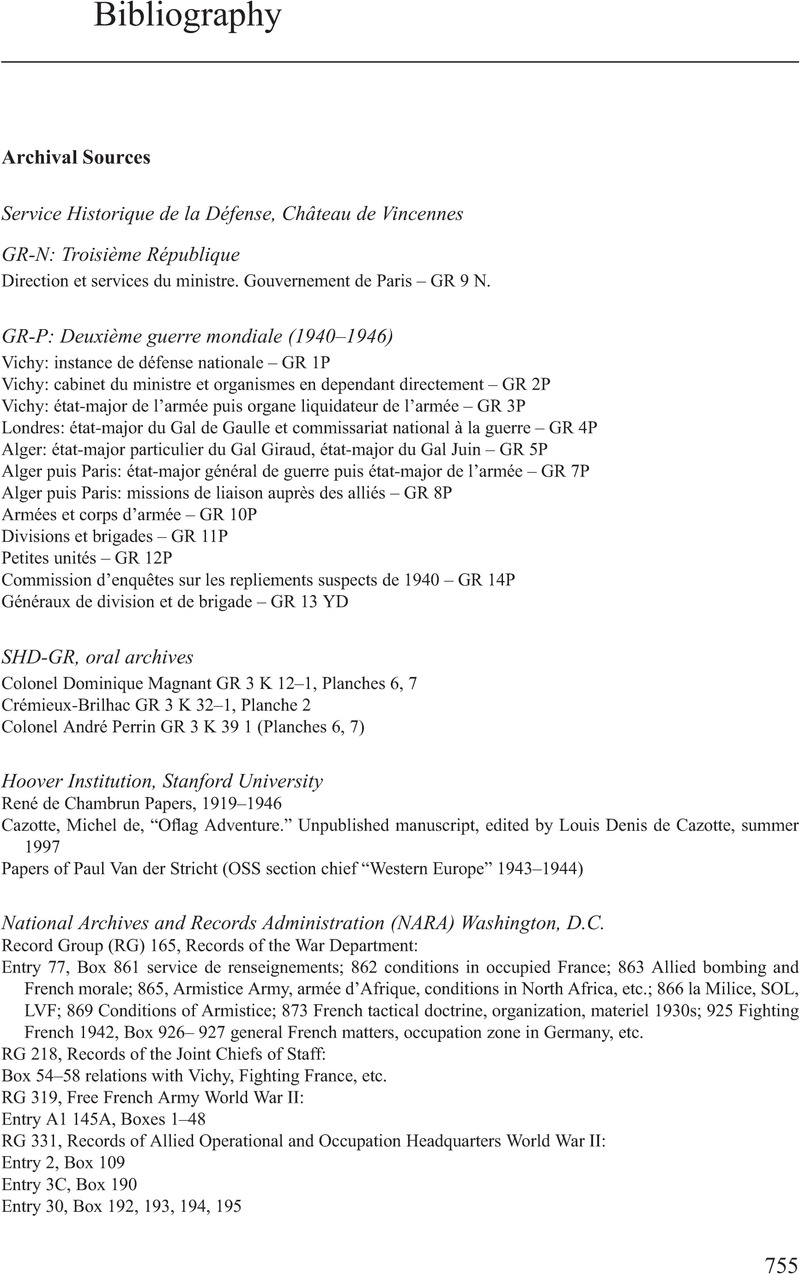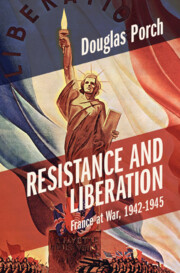Book contents
- Resistance and Liberation
- Armies of the Second World War
- Resistance and Liberation
- Copyright page
- Contents
- Figures
- Maps
- Preface
- Abbreviations
- 1 Tunisia
- 2 “A Sort of Resurrection of France”
- 3 Triumph and Dishonor in Italy
- 4 Resistance on the Eve of D-Day
- 5 “The Supreme Battle”
- 6 Anvil/Dragoon
- 7 L’amalgame
- 8 Les Vosges
- 9 Rhine and Danube
- 10 Conclusion
- Notes
- Bibliography
- Index
- References
Bibliography
Published online by Cambridge University Press: 05 January 2024
- Resistance and Liberation
- Armies of the Second World War
- Resistance and Liberation
- Copyright page
- Contents
- Figures
- Maps
- Preface
- Abbreviations
- 1 Tunisia
- 2 “A Sort of Resurrection of France”
- 3 Triumph and Dishonor in Italy
- 4 Resistance on the Eve of D-Day
- 5 “The Supreme Battle”
- 6 Anvil/Dragoon
- 7 L’amalgame
- 8 Les Vosges
- 9 Rhine and Danube
- 10 Conclusion
- Notes
- Bibliography
- Index
- References
Summary

- Type
- Chapter
- Information
- Resistance and LiberationFrance at War, 1942-1945, pp. 755 - 776Publisher: Cambridge University PressPrint publication year: 2024



